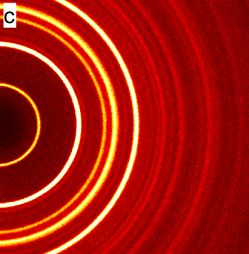I want to make an art installation where a trajectoid rolls down a squiggly and very narrow board (as opposed to a broad surface as shown in the video), so it’s evident that its quirky shape is particularly appropriate to that exact board.
and play music from Super Monkey Ball in the background
I’m not sure what - if any - practical application it has, but it’s extremely impressive nevertheless.
I feel like there has to be some clever use case, but I’ve got nothing
It might have none, or it might turn out to have some unexpected application way down the line.
The fun part about basic mathematics research is that sometimes it suddenly just perfectly solves some other problem hundreds of years later.
Like that time in the 1800s a guy figured out a solution to a 350 year old problem, and then in the 90s we realized that it was a description of particle physics and all the math had just been sitting there waiting.
From the article:
The research team suggests their formulas and algorithm could be used in robotics applications and also in physics research associated with the angular moment of an electron—or in quantum research centered around the study of evolution of a quantum bit.
It classifies as a basic math result, I’d think. Math is all interconnected, so you’d expect everything to have an economic impact eventually by force of statistics. If there was a subfield of math that stubbornly refused to go anywhere near applications that would itself be interesting.
Coyote final gets a bolder to hit the Road Runner
Sisyphus is going to be pissed.
I don’t know, this might actually add some entertainment value.
Algorithm, that’s a buzz word I want to hear more than just “AI”. Algorithms are peak efficiency.
isn’t current ‘ai’ basically just ‘algorithmic intelligence’?
It’s certainly algorithmic but I wouldn’t call it intelligence.
Maybe like veneer intelligence.
Classical algorithms are used to make a system that can learn, and then the system learns to do things in ways we can’t actually understand, to date. So, it’s built on top.
If you can find one. A classical algorithm that generates photorealistic images does not currently exist.
what about Blender
Ah, you got me, yes that counts as written. Let me revise that to “fully automatic classical algorithm that generates photorealistic images”. Blender requires a lot of human input to work that well.
This is a very cool math application but at the same time you figure this out the first time you roll a cone block down a ramp as a kid (compared to a cylinder block), so these headlines seemingly surprised about scientists discovering these things always seem like “well duh, of course”








